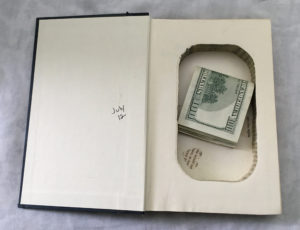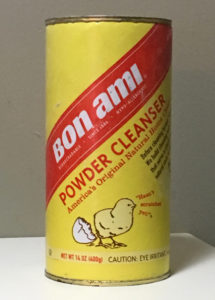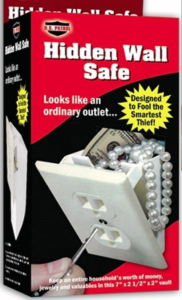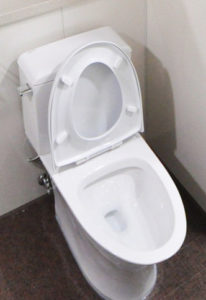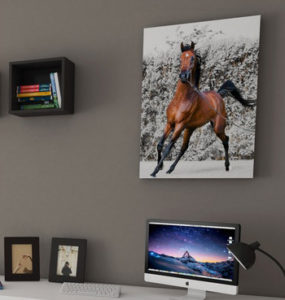The best way to prevent burglaries is to make it hard for burglars to find and steal your valuables. This month, Peter Young Home Inspections takes a look at the best and worst places to hide valuables in your home. You might be surprised at a few of them.
By and large, burglary is a crime of opportunity. Burglars want to get in and out quickly, which means there are some obvious locations they always check while ransacking a home. Logic dictates the way to outsmart them is to hide your valuables in less obvious places – sometimes even in plain sight.
The Best Places
Hollowed-Out Books
Chances are good burglars are not avid readers. Since used books don’t make a lot of money in resale, they are not likely targets for burglars. Hiding money or small jewelry items in hollowed-out books can be a safe bet for keeping burglars away from them. However, this only works in a library large enough to be inconvenient. A shelf with four books can be a giveaway that you’re hiding valuables there. So make sure there are dozens, or even hundreds of books in your library.
Trash Cans
A clever place to store cash or valuables is under the trash bag in a kitchen or bathroom trash can. Burglars are not likely to want to sift through garbage in the hopes of finding something worth pawning.
The Freezer
Wrap cash or small jewelry in wax paper and aluminum foil, then place them in a freezer bag marked “bacon” or “chicken tenders,” and stuff them into the back of the freezer. This is also a good place to store important documents in the event of a house fire. A word of caution: This is not foolproof. Documents are safer when stored offsite in a safe deposit box.
Decoy Product Containers
Food containers in your cupboard, cleaning product containers in your kitchen and bathroom, personal hygiene product boxes – all these are great places to store cash or valuables. Online stores even sell fake product containers for this purpose, but beware. Some fake containers really look fake. Some are just too clean to have been under the sink, so you can “improve” them by rubbing water on them and making them look well-used.
Another trick is put cash or valuables in a small plastic bag and bury it in a heavy box of cat litter out in the garage or utility room. Be sure to put the bag deep enough that it doesn’t show through the litter.
A Floor Safe
Storing cash and jewelry in a floor safe in the bedroom closet may seem like an obvious location, but if the safe is heavy and bolted down properly, most burglars will not want to expend the time and energy or risk the noise it would take to get into a well-fortified floor safe.
House Plants
A plant’s soil can be housed in a waterproof liner that can be lifted up to gain access to valuables stored underneath. For added safety, your valuables should be stored in a waterproof plastic bag, just in case the plant liner breaks or leaks.
False Wall Outlet
Cut away some drywall to install an empty electrical box, and then cover it with a fake electrical outlet cover or a blank plastic plate. CAUTION: Do not use a live receptacle or cut through any electrical wiring upon installation.
Labeled Boxes in Garage or Utility Room
If you have a lot of boxes in your garage or utility room, place valuable items in a box with a boring label, such as “Mom’s embroidery,” or “Timmy’s kindergarten project.” Be sure this is stashed beneath or behind other boxes. A stack of garage boxes is not a tempting target for a burglar on a tight time crunch.
Click this link to learn more about hidden safes for your valuables:
The Worst Places
The Toilet Tank
This is a bad idea. Don’t store valuable in a place when moisture can seep in, such as toilet tanks or cans filled with paint. It’s a recipe for disaster.
Jewelry Boxes
Don’t keep anything but “bling” and costume jewelry in jewelry boxes. They are an open invitation to burglars. You might want to hide your mother’s pearls or your grandmother’s antique wedding ring in your fake electrical outlet safe. Better yet, put them in a bank safe deposit box.
Drawers
Avoid putting cash and valuables in desk drawers, bedside drawers, and dresser drawers. These are some of the first places that burglars look. They will ransack the drawers, dumping their contents to the floor for easy sorting.
CD or DVD Cases
Keeping a fake DVD case for valuables is a bad idea. CDs and DVDs can fetch from $1 to $10 at pawn and resale shops. Count on losing your whole collection in a burglary, even your old Hansen and Carpenters albums. Titles don’t matter.
A Wall Safe
Burglars can dislodge wall safes by cutting out the drywall around them. Unless the safes are secured to the wall studs by professional installers, don’t use them. Most are light enough for burglars to carry off your premises to open later at their leisure.
Picture Frames
Most picture frame safes with false backs or hollow interiors are thicker than normal, so they’re a dead giveaway to burglars. Also, if the art is nice enough, it might get stolen, too.
The Cookie Jar
This is too cliché. Who doesn’t know about hiding money in the cookie jar? Don’t put anything but cookies in there.
The Toaster
Don’t store valuables in electrical devices. You could burn your house down.
Locked Filing Cabinets
The lock on a filing cabinet can be pried out with very little effort. The lock is like having a big, red arrow pointing at your valuables, telling the burglar, “Look here!”
Some Final Thoughts
Use common sense when storing cash and valuables at home. Here’s a final word of advice: If you’re going away, don’t advertise it to the world on social media. Cancel your newspaper while you’re gone, and ask a trusted neighbor to keep your mailbox empty.
Buying A Home?
Call Peter Young Home Inspections before you buy to avoid nasty or costly surprises.

